Moscow’s Bible, 1663
Moscow’s Bible, 1663
by Tamara Glushetckaia
- Author: Unknown
- Title: Moscow’s Bible
- Date: 1663 (17th century)
- Edition: Reissue of the Ostrog Bible (1581) with corrections
- Editor: Epiphanius Slavinetsky
- Compositors: Grigorii and Evsevii Semenov, Ivan Khristianinov, Leontii Vasilev, Fedor and Ivan Fedorov, Daniil Artemev, Fedka Isaev the Younger, Tikhon Fefilov and others
- Pages: 1055
- Language: Old Church Slavonic
- Source: Boris Yeltsin Presidential Library
For the research and analysis I chose the Bible which was printed in Moscow in 1663. The main reason why I chose this Bible is because there are plenty of illustrations (engravings) which were made by Russian masters. Also, this Bible was produced in essential time for the empire that included reforms in all spheres of life. Read more about everything below.
Purpose
The Moscow Bible was printed in 1663 as a version of the Bible, which was translated from ancient Greek into old Church Slavonic. The literalism in the transfer of Greek constructions has been strengthened. This Bible should become the main church book, which was to include all corrections related to the new church reform of Patriarch Nikon. The next edition of the Bible with corrections followed only in 1751, but work on it was carried out in 1712.
Formal aspects
Moscow’s Bible was distinguished by a non-standard size for the Printing House. The book is presented in the in-folio format. Simon Franklin in his article “Printing Moscow: Significances of the Frontispiece to the 1663 Bible” reminds that “a column height of c. 275 mm, it was among the tallest folio volumes produced by the press”. The text presented in two columns.
Moscow’s Bible stands out for a large number of engravings made by Russian masters. They reflect saints and biblical stories as we can see in the frontispiece presented above. There’s presents the emblem of the Russian Empire which reflects double-headed eagle with three crowns. Also, there’s the plan of Moscow which surrounded by several subjects. At the beginning of the page is clouds with shadows of the sun and the moon. Besides, we can notice a figure of the tsar who looks at the city and presents as a guardian. On the left side of page is the scene of Adam and Eva near the trees. On the right side of the page is the scene of the hanging of the Christ. On the background we can notice the architecture of Moscow. A little bit lower the scene with the serpent on the cross. It should be the Moses (who prayed) and the brazen serpent. There is an inscription “the crowd saw a sign in the form of a serpent who created this/ the crowd saw the serpent who created it and it was a sign”. In the lower left corner, there is a scene of Adam and Eve’s escape from paradise (an expulsion from Eden). There are some inscriptions and letters what are described in detail in the article by Simon Franklin in his article “Printing Moscow: Significances of the Frontispiece to the 1663 Bible”.
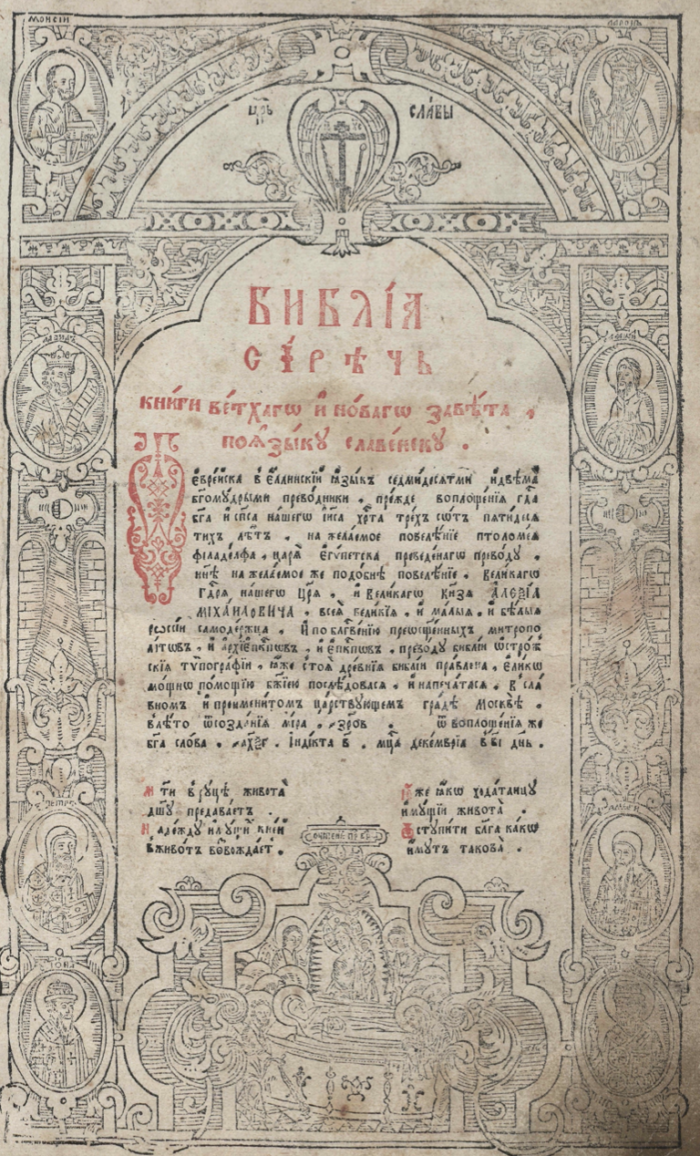
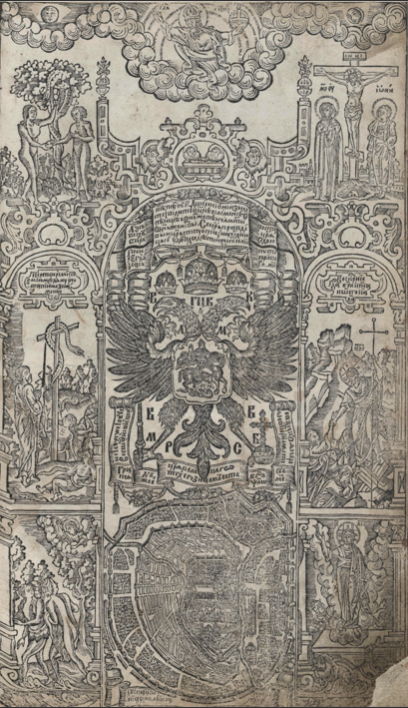
Political value
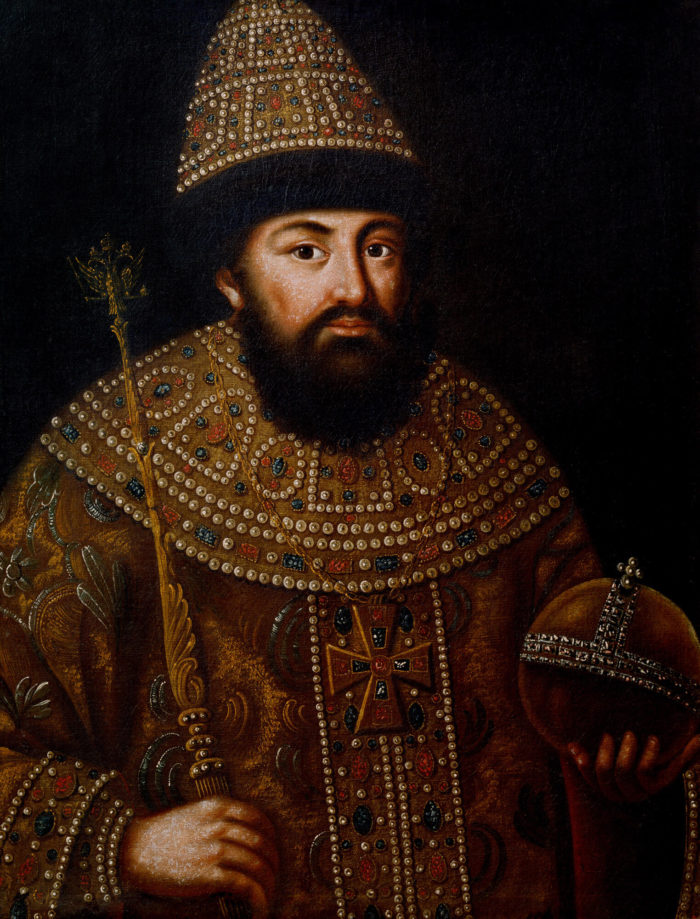
The Moscow Bible was printed in 1663 during the reign of tsar Alexei Mikhailovich. During his reign there were riots, as well as many innovations. For example, the new legislation of Russia. The document affirmed the principle of a centralized state with the authoritarian power of the tsar. The changes also concerned the church side of the state. So, in 1652 Nikon became patriarch who was abbot of the Kozheezersky monastery, and then, by decree of the tsar, Archimandrite of the Novospassky Monastery in Moscow. In the 1650-1660s, a church reform was carried out, which at first was headed by Patriarch Nikon, which led to the split of the Russian Orthodox Church and the excommunication of Old Believers.
The church reform included changing the rites and liturgical customs of the Moscow Church to Greek. The publication of new liturgical books began, in which “Иисус” was printed, and not “Исус”, were introduced Greek liturgical rites and hymns according to the “Kiev canons”. Thus, the church split into “Nikonians” and “Old Believers”. In 1663, by decree of the tsar, it was decided to print the Moscow’s Bible, which was supposed to be a model, including both the Old Testament and the New Testament and the Psalter.
Illustrations (engravings)
The Bible includes 6 engravings with figures of saints. Among them are Mark the Evangelist (Марк), Matthew the Apostle (Матфей), Luke the Evangelist (Лука), John the Evangelist (Иоанн), David the tsar (Давид). All engravings are made with detailed realism.
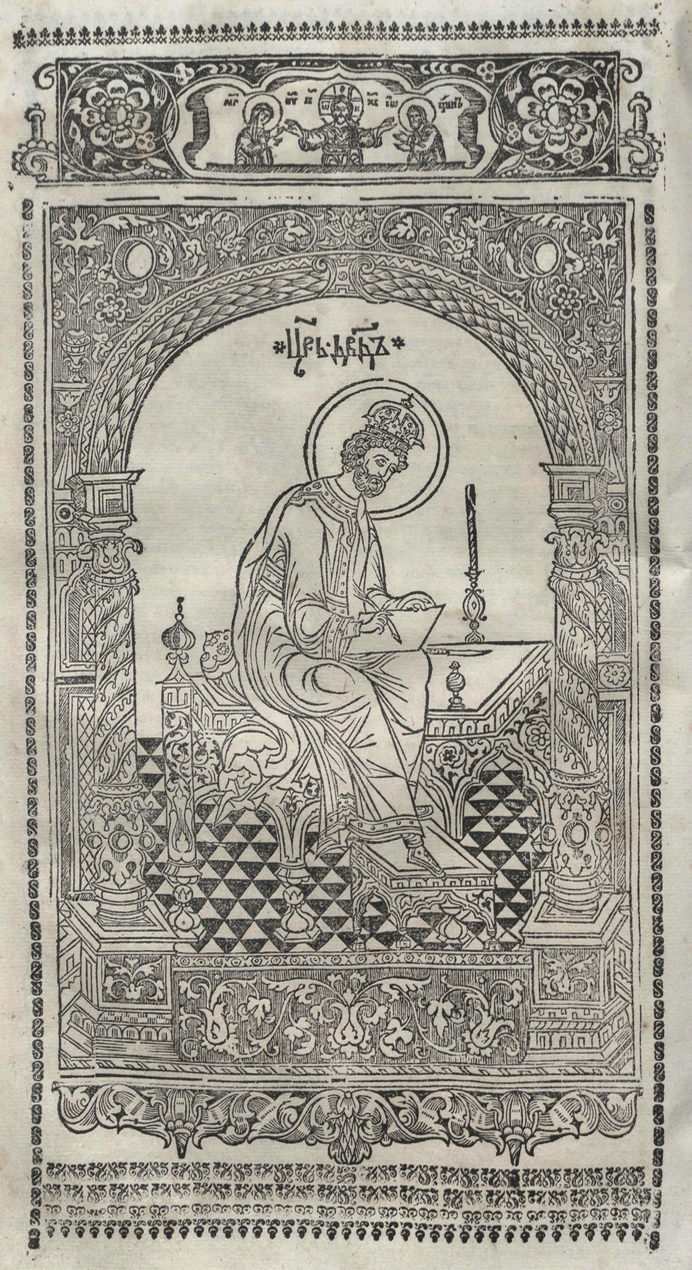
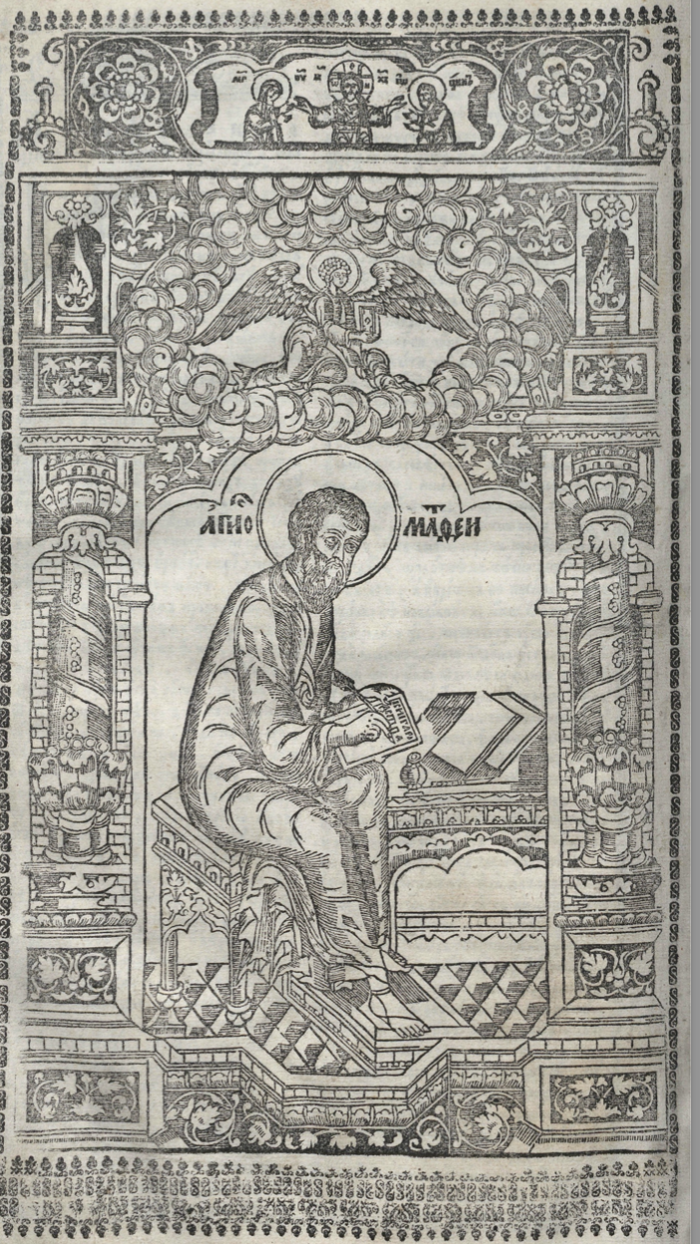
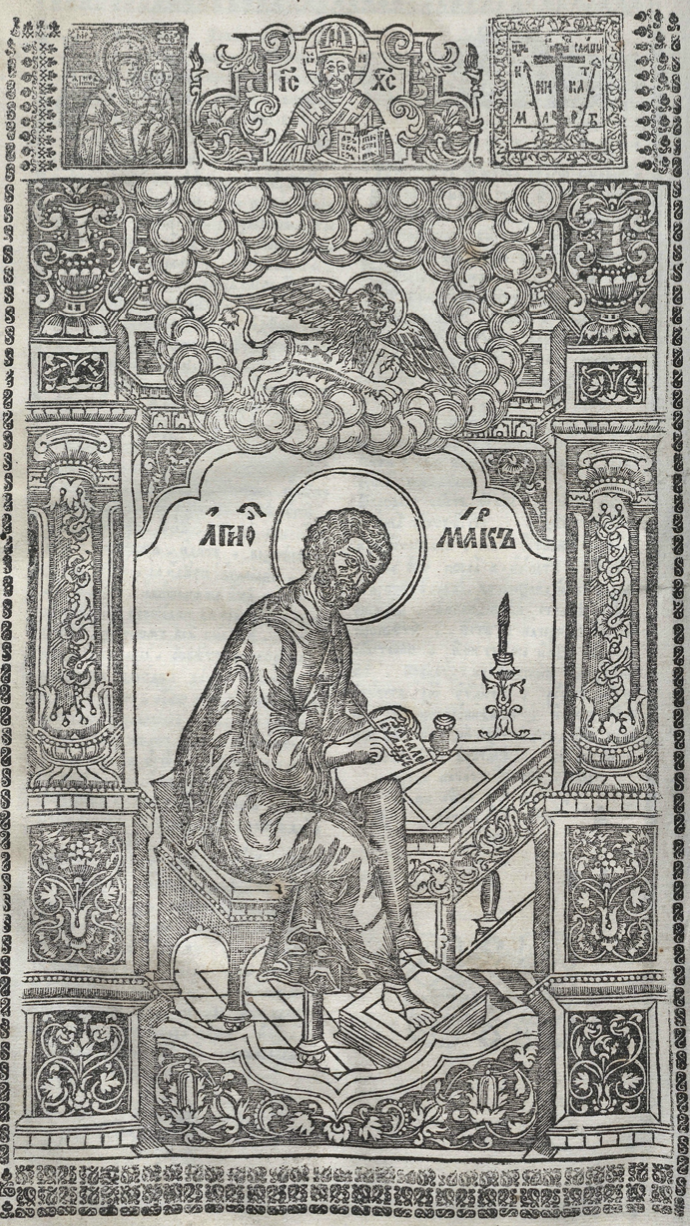
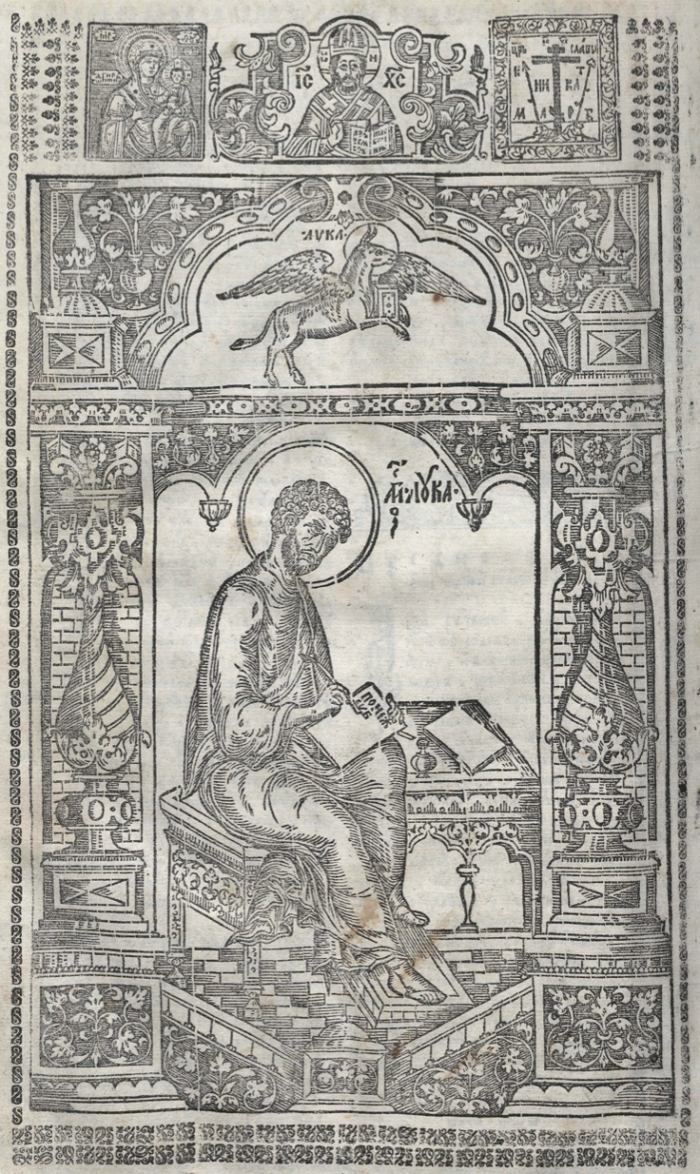
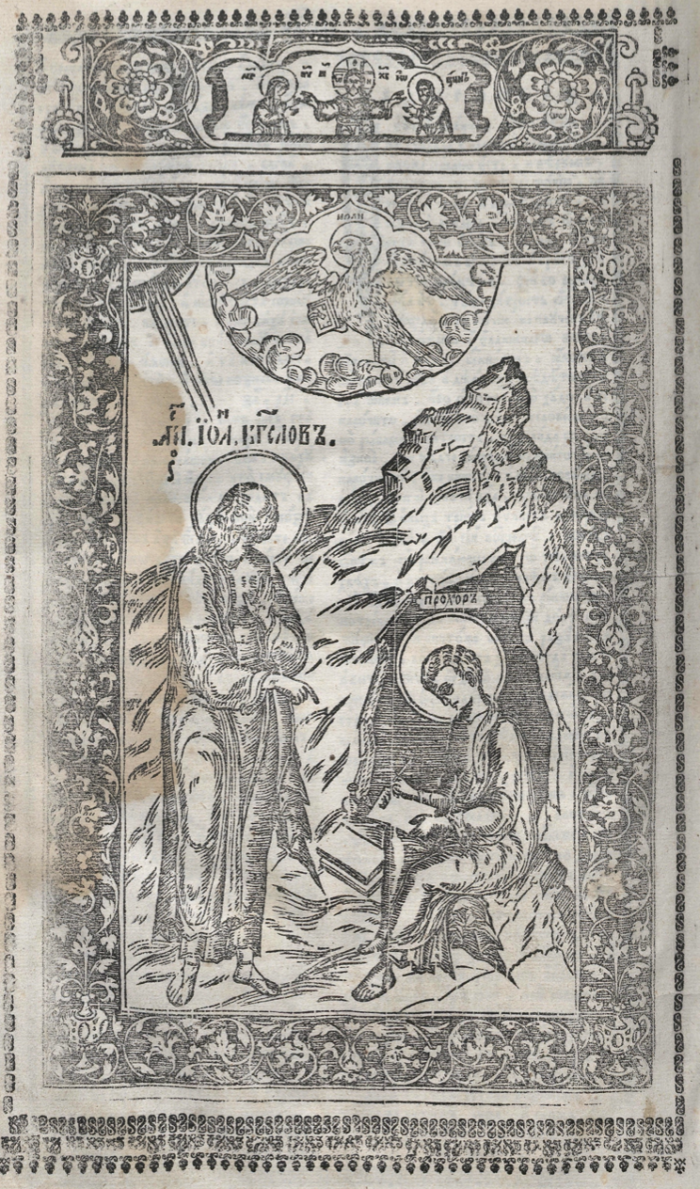
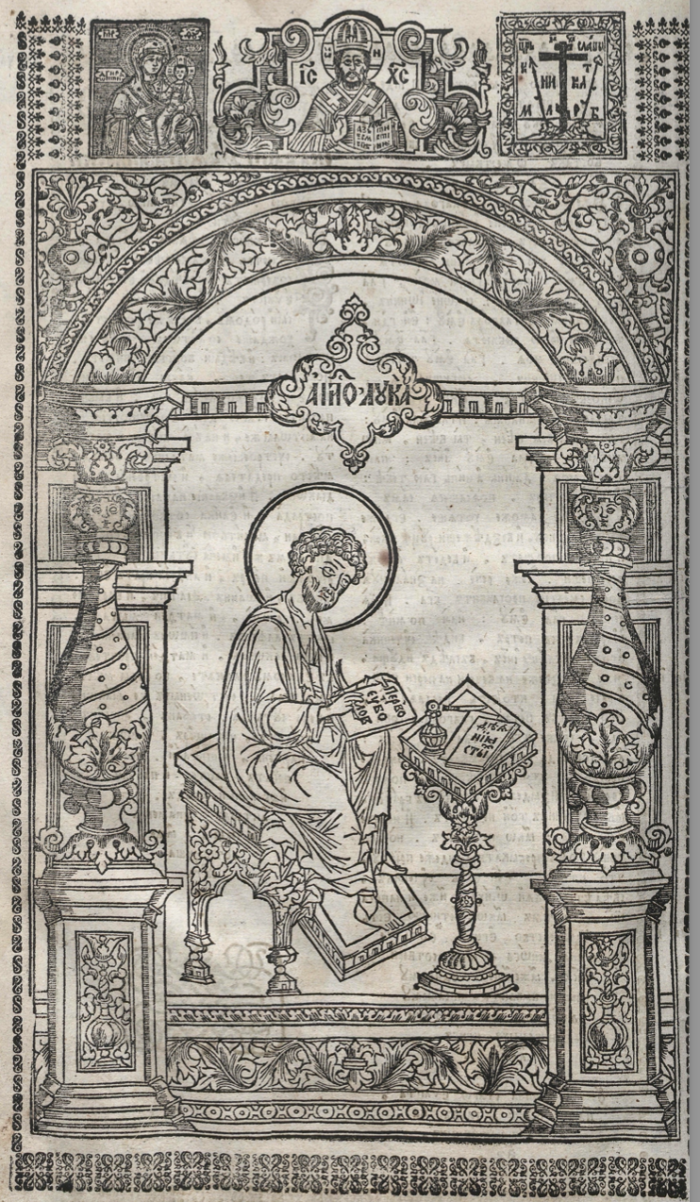
Psalm 22 (23)

Господь пасёт меня и ни в чём не даст мне нуждаться
на месте, где зелень обильна, – там Он меня поселил, у воды спокойной воспитал меня,
душу мою обратил, направил меня на пути правды ради имени Своего.
Ведь если я и пойду посреди тени смертной, не устрашусь зла, ибо Ты – со мною: жезл Твой и посох Твой – они меня ободрили.
Приготовил Ты пред лицом моим трапезу напротив теснящих меня, умастил елеем голову мою, и чаша Твоя опьяняет меня, как крепчайшая.
И милость Твоя будет следовать за мною во все дни жизни моей, и обитать мне в доме Господнем на долгие дни!
If we compare the psalm with the English translation, then there is a difference. The psalm in Old Church Slavonic begins with the words “The Lord descend me”, but in English version is “The Lord is my shepherd”. Then the word order changes, but the meaning remains the same.
Bibliography
- FRANKLIN, SIMON. “Printing Moscow: Significances of the Frontispiece to the 1663 Bible.” The Slavonic and East European Review 88, no. 1/2 (2010): 73–95. http://www.jstor.org/stable/20780412.
- ANDREEV, I. L. “Alexey Mikhailovich.” The Big Russian Encyclopaedia: https://bigenc.ru/domestic_history/text/3781481
- SAZONOVA, N. I. “The Liturgical reform of Patriarch Nikon (1654-1666) and state-church relations (based on the materials of the Nikon Breviary)”: https://cyberleninka.ru/article/n/liturgicheskaya-reforma-patriarha-nikona-1654-1666-gg-i-gosudarstvenno-tserkovnye-otnosheniya-po-materialam-nikonovskoy-spravy-trebnika/viewer



